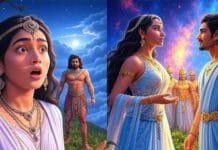The preparations are in full swing to nominate the Ramayana, written by Maharishi Valmiki, for inclusion in the UNESCO World Heritage list. This monumental work will be nominated alongside other revered texts such as the Guru Granth Sahib, Ashoka’s inscriptions, Kautilya’s Arthashastra, and the Thirukkural by Tamil poet Tiruvalluvar. This proposal is set to be presented at the International Advisory meeting scheduled for March next year.
International Advisory Meeting and the UNESCO Memory of the World Program
Professor Dr. Ramesh Chandra Gaur, head of the UNESCO Memory of the World Nodal Center at the Indira Gandhi National Arts Center, shared this significant information during his visit to Raipur, the capital of Chhattisgarh. The International Advisory meeting will play a crucial role in determining the inclusion of these revered texts in the UNESCO World Heritage list. The Bhagwat Geeta and Bharatmuni’s Natya Shastra, nominated last September, will also be considered during this meeting. Fourteen experts from around the globe will deliberate on these nominations, showcasing the global interest in preserving these texts.
Significance of the Valmiki Ramayana
The Ramayana, authored by Maharishi Valmiki, is one of the oldest and most significant epic narratives in Indian literature. This ancient text, composed in Sanskrit, narrates the life of Prince Rama, his exile, the abduction of his wife Sita by the demon king Ravana, and the subsequent war to rescue her. The Ramayana is not only a literary masterpiece but also a cultural and spiritual guide for millions. Its nomination for the UNESCO World Heritage list underscores its enduring influence and the necessity of its preservation for future generations.
Guru Granth Sahib: A Spiritual and Cultural Beacon
The Guru Granth Sahib is the central religious scripture of Sikhism, regarded by Sikhs as the final, sovereign, and eternal living Guru. The Guru Granth Sahib is not only a spiritual guide but also a treasure trove of philosophical, cultural, and ethical teachings. Its nomination for the UNESCO World Heritage list highlights its profound impact on spiritual and cultural traditions.
Other Nominations: Ashoka’s Inscriptions, Arthashastra, and Thirukkural
In addition to the Ramayana and Guru Granth Sahib, other notable works such as Ashoka’s inscriptions, Kautilya’s Arthashastra, and Thirukkural will also be nominated.
Ashoka’s Inscriptions: These inscriptions are a series of edicts on rocks and pillars made by Emperor Ashoka during his reign in the 3rd century BCE. They represent one of the earliest forms of written language in the Indian subcontinent and provide valuable insights into Ashoka’s governance, his embrace of Buddhism, and his efforts to propagate the Dhamma (moral law).
Kautilya’s Arthashastra: This ancient Indian treatise on statecraft, economic policy, and military strategy was written by Kautilya (also known as Chanakya) around the 4th century BCE. The Arthashastra is considered one of the most comprehensive works on political economy from ancient India, detailing various aspects of administration, law, diplomacy, and war.
Thirukkural: Composed by the Tamil poet Tiruvalluvar, the Thirukkural is a classic Tamil text consisting of 1,330 couplets or Kurals. It addresses everyday virtues, ethics, and morality, covering topics such as righteousness, wealth, and love. The Thirukkural has been widely translated and is revered for its universal and timeless wisdom.
UNESCO’s Memory of the World Register
UNESCO’s Memory of the World Program aims to preserve and make accessible the documentary heritage of humanity. Only five nominations can be made each year at regional and international levels, but multiple nominations can be submitted for the national register. The proposal to include these texts will be a significant step towards acknowledging and preserving India’s rich literary and cultural heritage.
Recent Inclusions in the UNESCO World Heritage List
In a recent meeting of UNESCO’s Memory of the World Regional Register (Asia-Pacific) held in Ulaanbaatar, Mongolia, three Indian manuscripts were included in the World Heritage List of Asia-Pacific. These are:
- The illustrated manuscript of Ramcharitmanas written by Tulsidas.
- The 15th-century manuscript of Panchatantra fables authored by Vishnu Sharma.
- The manuscript of Sahridayalok-Lokan, written by Acharya Anand Vardhan.
These inclusions mark a significant recognition of India’s literary treasures and emphasize the importance of preserving these historical documents.
Celebrating India’s Literary Heritage
These texts not only reflect the historical and cultural evolution of the Indian subcontinent but also continue to inspire and guide millions worldwide. As we prepare for the International Advisory meeting, we look forward to the recognition and preservation of these invaluable works, ensuring their legacy for future generations. The inclusion of these texts in the UNESCO World Heritage list will undoubtedly underscore their global significance and contribute to the appreciation and understanding of India’s rich cultural history.















